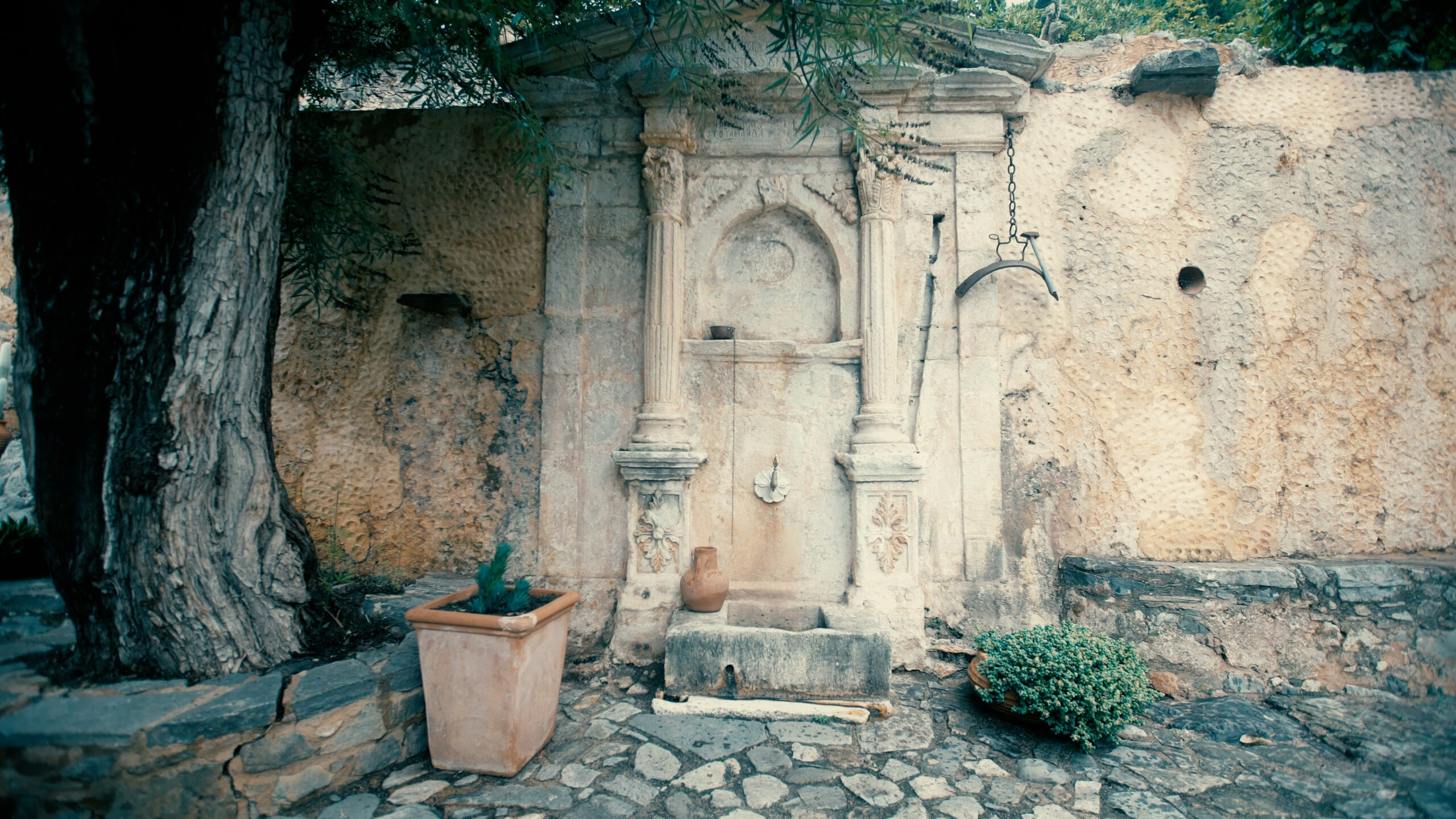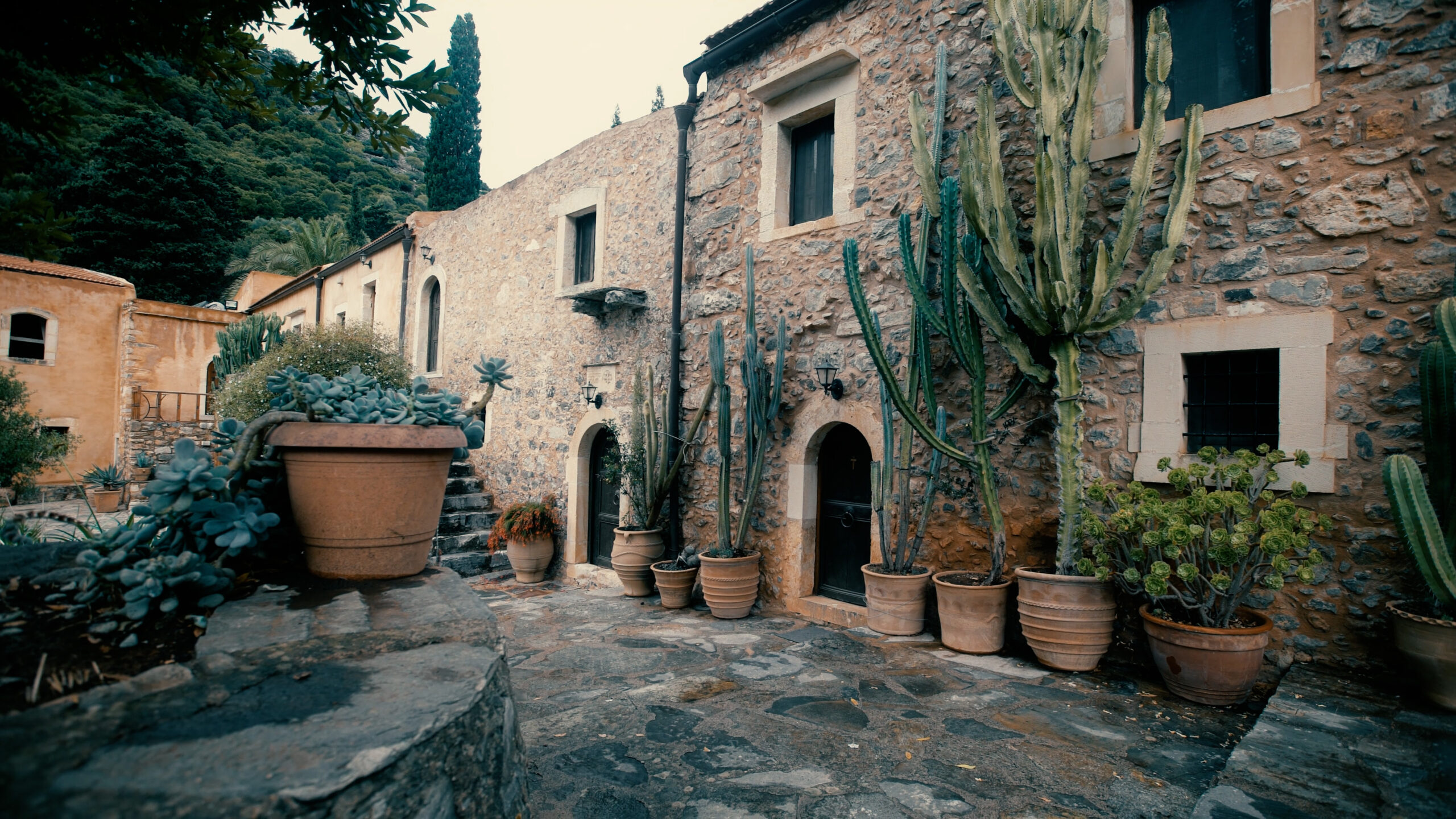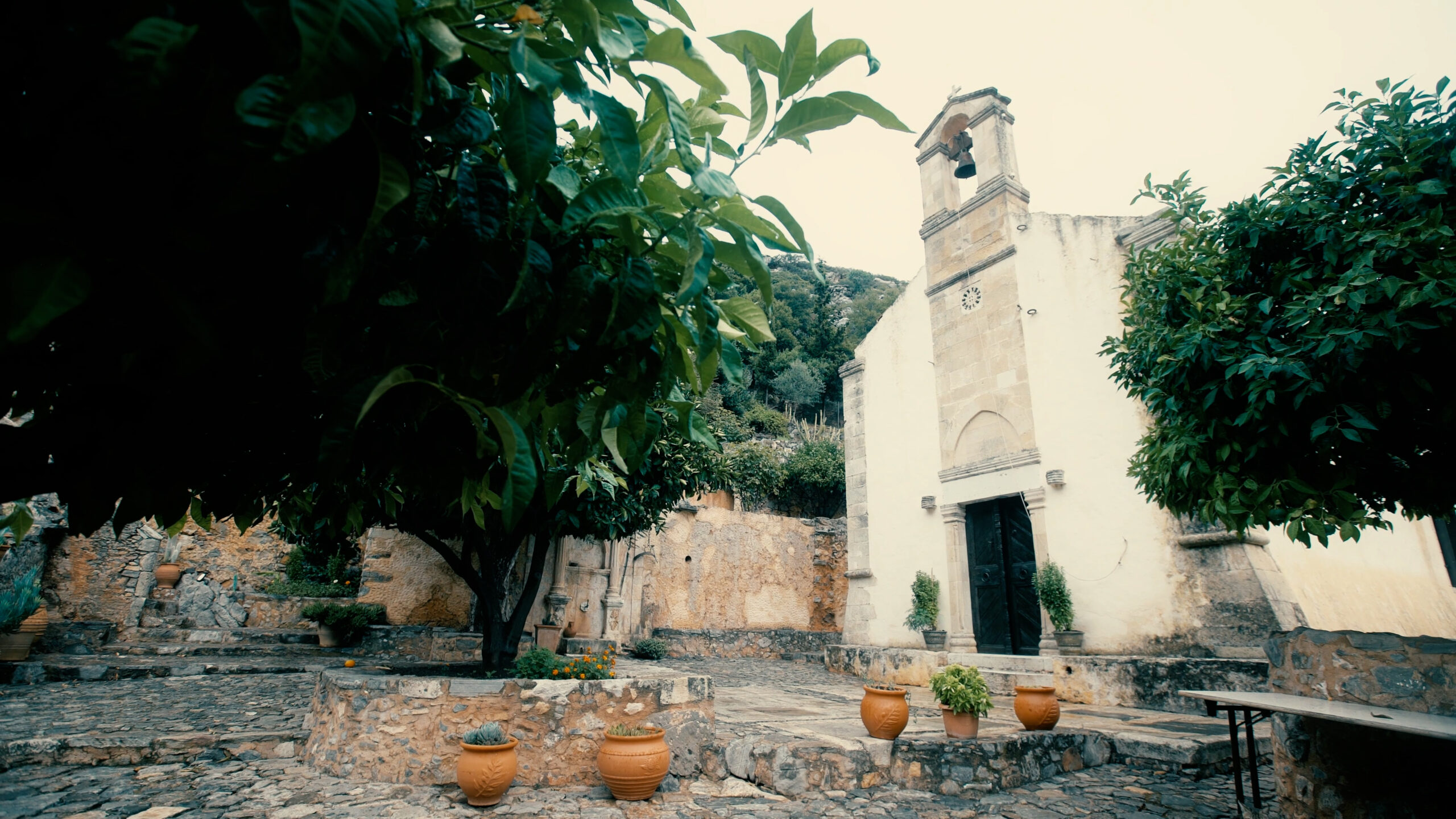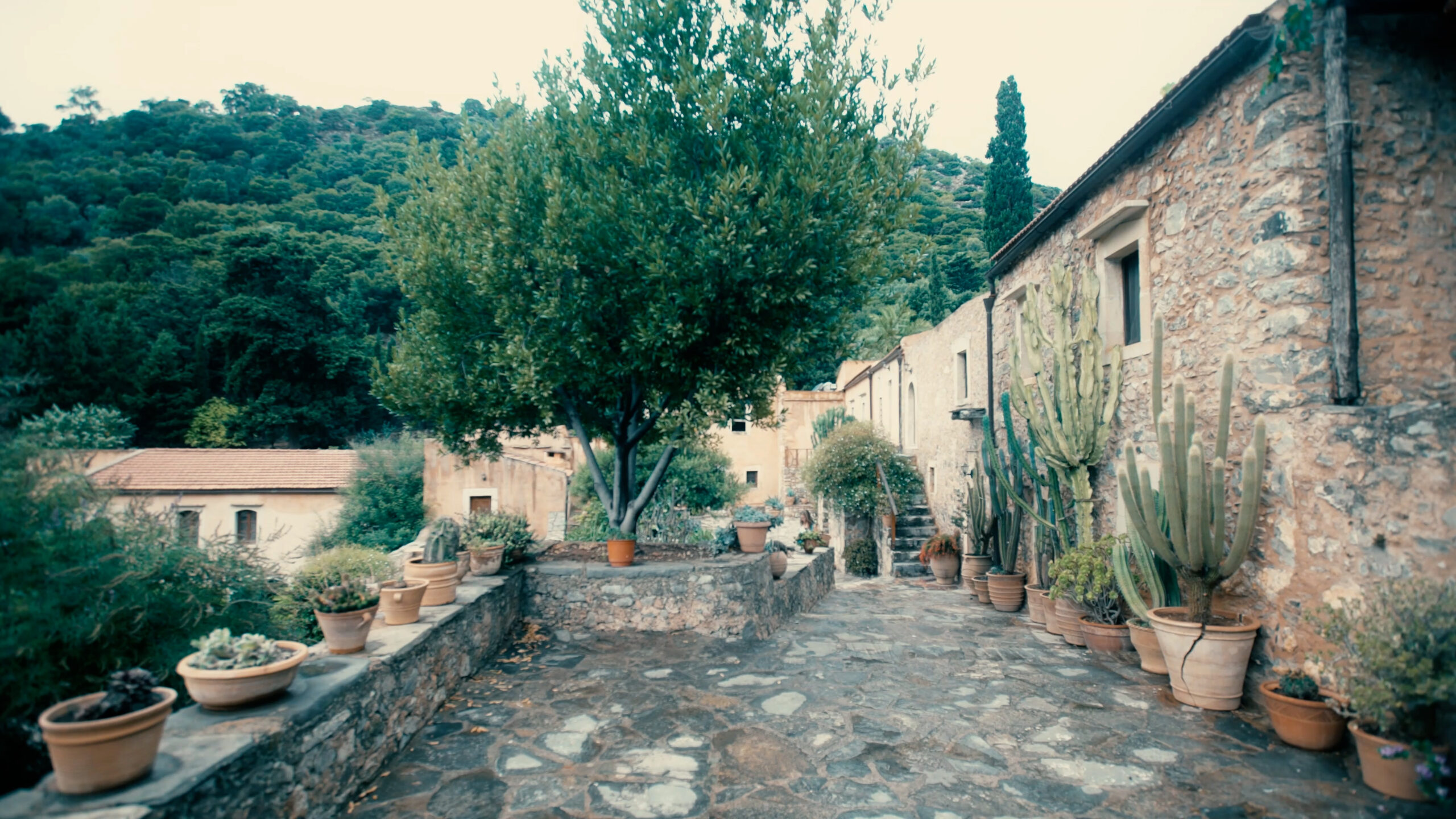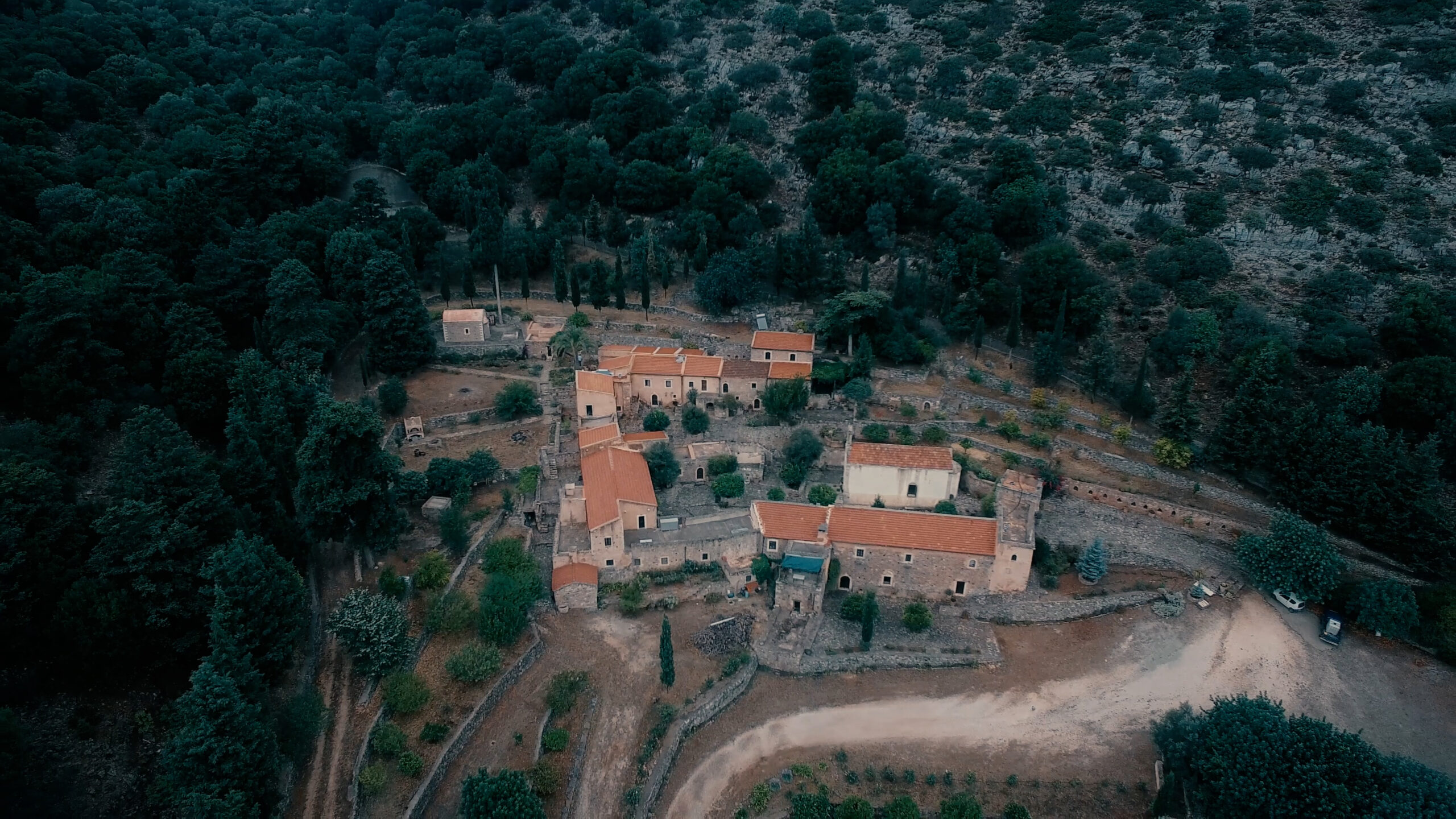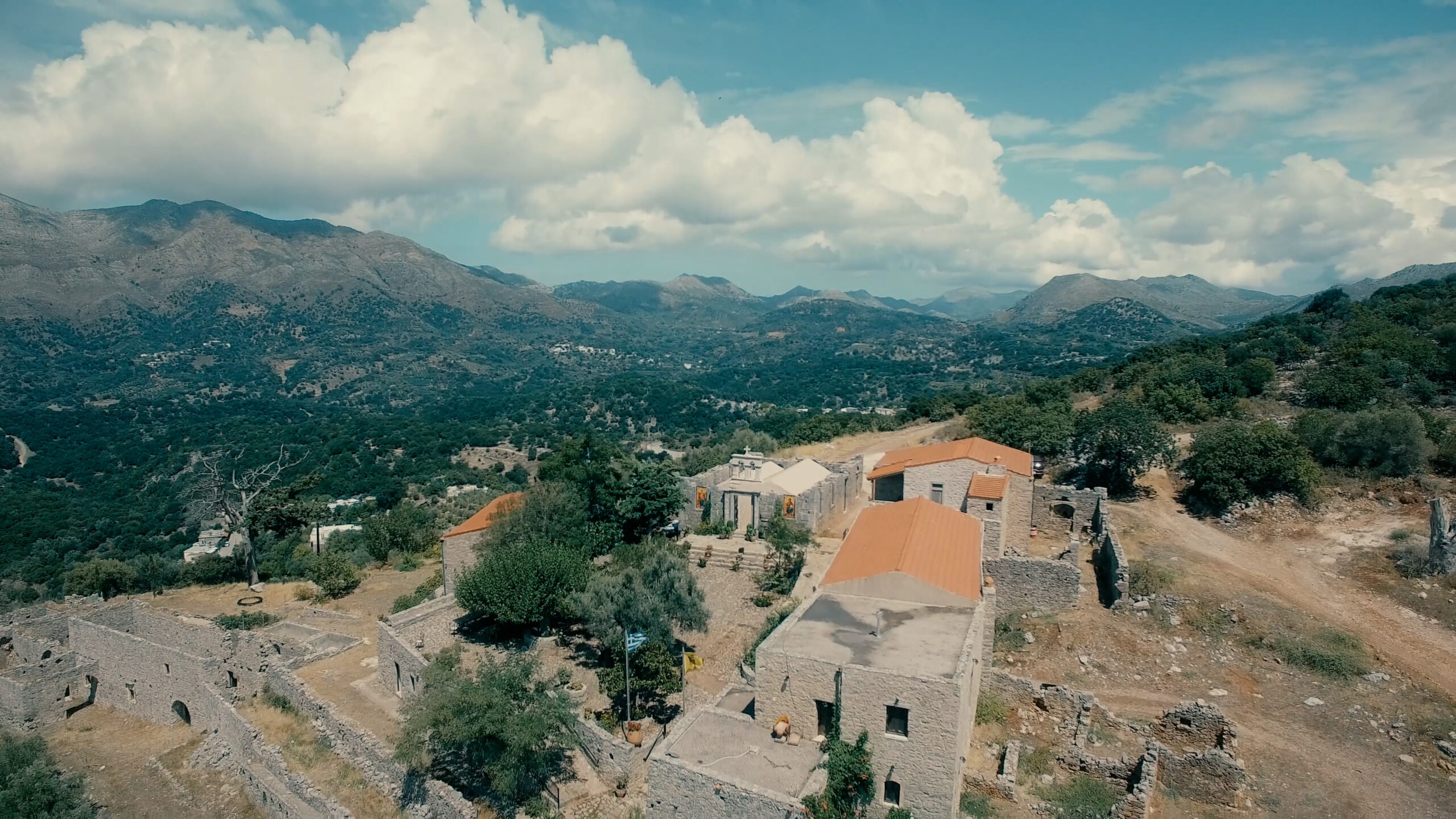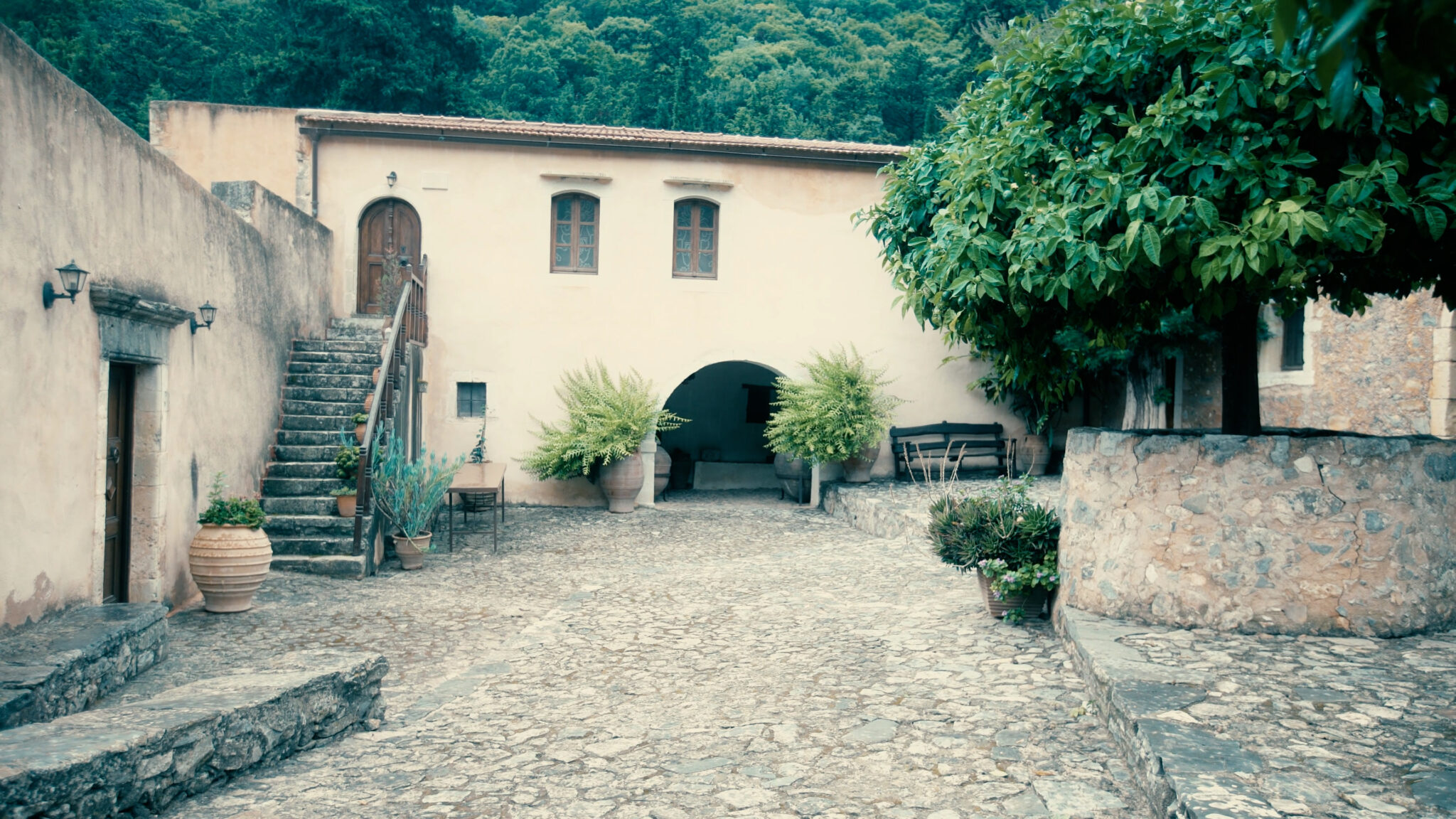The Vosakou Monastery is located on the edge of a small plateau in the southern foothills of the Tallaia Mountains and is dedicated to the Holy Cross. The exact one
the time of its foundation is unknown, although fragments of mural decoration found in the area and dated to the 14th – 15th century refer to this time period. The Monastery is mentioned in two notarial documents, of 1628 and 1629, without giving more information about it. The monks of the Monastery participated in the revolutions against the Ottoman rule. The consequence of their action was the frequent destruction of the Monastery, as happened in 1821 when it was set on fire by the Turks, resulting in the destruction of the temple, the library and its archives. Most of her monks were massacred. The participation of the Monastery in the revolution of 1866 – 1869 under the hegemony of the abbot Melchizedek Vardiambasi resulted in its destruction once again, in 1867. After the death of the last monks in 1960, the Monastery was abandoned and its premises were used as stables. In 1998 the Diocese of Rethymno and Avlopotamos decided to re-establish it. In 2000, the main restoration program began. Today it is an important pilgrimage center of the region. The monastery preserves many relics, including 19th-century icons, and a gold-embroidered epitaph from 1761, with an unusual dedicatory inscription, which unleashes a curse on anyone who steals it.
The building complex of the Monastery is of the fortress type with an enclosure. The plan of the complex is irregular in shape adapted to the relief of the ground. The Monastery got its present form gradually. The buildings are arranged on three levels due to the sloping ground and are divided into three wings, the north, south and west. The Monastery has seven entrances. The main entrance is on the east side. A cobblestone path leads to it. The entrance has a gate of carved stones, the key of which has an impressive relief cross and the date of its construction, 1669. In the south wing are the Bank, the Archontariki and on the ground floor cattle stables, storage areas, workshops for the processing of honey and wax, an olive press and a distillery for the production of raki. In the north wing there are storage areas and cells, while in the west is the Abbot and on the ground floor the kitchen. Of great interest is the monumental fountain of the Monastery, built in the 17th century. and was connected to a vaulted cistern to which water was supplied from an adjacent spring. It has an engraved inscription where the date 1672 AUGUST 5 can be seen.
The monastery’s catholicon is located approximately in the middle of the courtyard area. It is a tall, rectangular, vaulted building with an entrance to the west and a single-lobed, arched belfry. According to a surviving inscription, it was built in 1899. Fragments of 14th-15th century frescoes, found gathered under the floor of the central courtyard, apparently belong to the old catholicon, which was in ruins when the current one was built. No traces of this first temple have been found, as it seems that the present one was founded directly above it.
